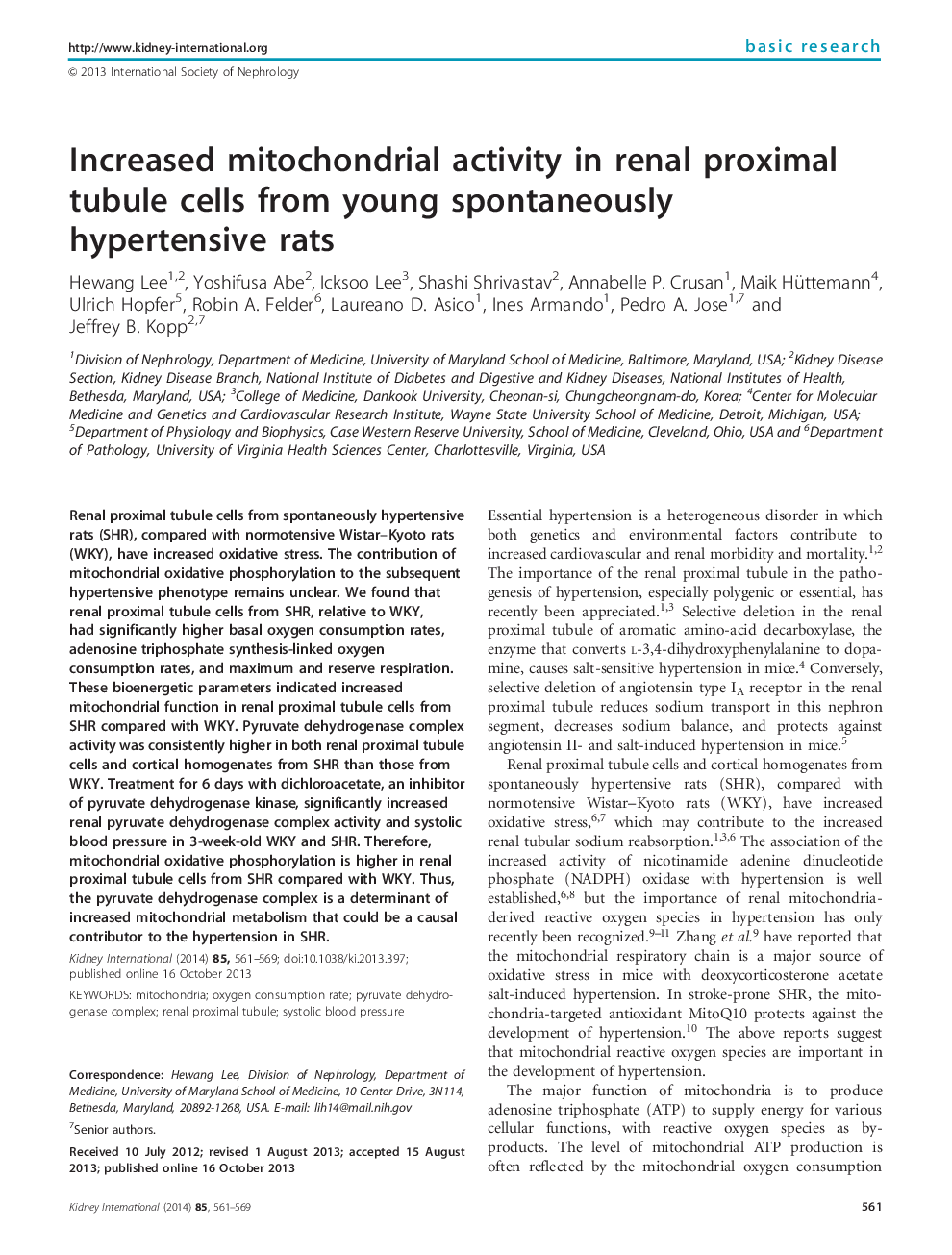| Article ID | Journal | Published Year | Pages | File Type |
|---|---|---|---|---|
| 6160823 | Kidney International | 2014 | 9 Pages |
Abstract
Renal proximal tubule cells from spontaneously hypertensive rats (SHR), compared with normotensive Wistar-Kyoto rats (WKY), have increased oxidative stress. The contribution of mitochondrial oxidative phosphorylation to the subsequent hypertensive phenotype remains unclear. We found that renal proximal tubule cells from SHR, relative to WKY, had significantly higher basal oxygen consumption rates, adenosine triphosphate synthesis-linked oxygen consumption rates, and maximum and reserve respiration. These bioenergetic parameters indicated increased mitochondrial function in renal proximal tubule cells from SHR compared with WKY. Pyruvate dehydrogenase complex activity was consistently higher in both renal proximal tubule cells and cortical homogenates from SHR than those from WKY. Treatment for 6 days with dichloroacetate, an inhibitor of pyruvate dehydrogenase kinase, significantly increased renal pyruvate dehydrogenase complex activity and systolic blood pressure in 3-week-old WKY and SHR. Therefore, mitochondrial oxidative phosphorylation is higher in renal proximal tubule cells from SHR compared with WKY. Thus, the pyruvate dehydrogenase complex is a determinant of increased mitochondrial metabolism that could be a causal contributor to the hypertension in SHR.
Keywords
Related Topics
Health Sciences
Medicine and Dentistry
Nephrology
Authors
Hewang Lee, Yoshifusa Abe, Icksoo Lee, Shashi Shrivastav, Annabelle P. Crusan, Maik Hüttemann, Ulrich Hopfer, Robin A. Felder, Laureano D. Asico, Ines Armando, Pedro A. Jose, Jeffrey B. Kopp,
